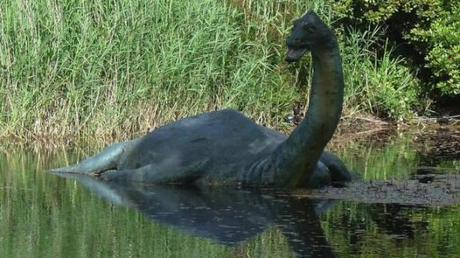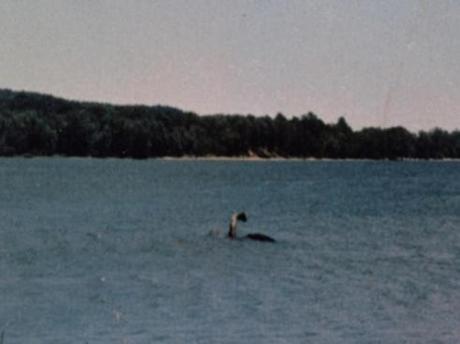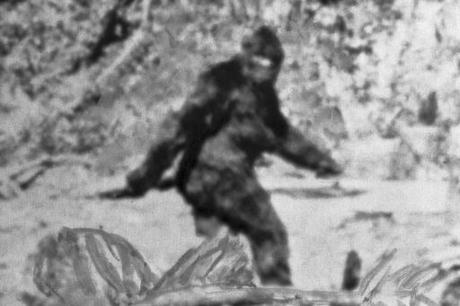When discussing cryptozoological animals in a group, the idea inevitably comes up of shooting such a creature and claiming a reward. To some this may sound like a doable idea, however many regions throughout the world have a fondness for their mysterious creatures. This has led to many cases where they have gotten governments involved to make sure their local cryptids are legally protected.

Loch Ness Monster: The modern era of Nessie sightings began in Scotland in the 1930's as the people around the loch began to see a dinosaur-like creature both in the waters and occasionally on land. Realizing the potential scientific importance of such an animal, railroad mogul and parliament member Sir Murdoch MacDonald began pushing for legislation to protect the Loch Ness Monster from possibly being killed to no avail. However decades later British Parliament passed the Wildlife and Countryside Act in 1981, which among other things protects endangered species. Given that Nessie fits this bill many have pointed to the fact that this legislation does in fact protect the beloved monster.

Yeti: In the middle of the 20 th century, the Yeti became a hot topic among cryptozoologists, as adventurers in the Himalayas from the West began to increasingly see the mysterious creature. In response to this in 1959, the United States Embassy in Kathmandue were given a set of regulations and rules from the government of Nepal concerning the Yeti. First and foremost anyone who wished to pursue the famed Abominable Snowman had to purchase a permit from the Nepalese government. Secondly you can only hunt the creature to photograph it or capture it alive, killing the Yeti is only permitted in self-defense. Most importantly, if you encounter the Yeti you must report the incident to the Government of Nepal and allow them to decide what, if anything, is told to the media.

Champ: When European settlers made their way to the shores of Lake Champlain, they learned from the natives of a massive creature beneath it's waters. Today the fabled monster's home attracts countless visitors as it is the largest lake in the Adirondack Mountain region. Despite the activity, the region still holds a special love for their cryptozoological treasure and took legal steps to protect Champ. In 1981, Port Henry, New York, home to Champ Day passed an ordinance officially declaring their portion of Lake Champlain a safe haven for the sea serpent. The following year in the Vermont State Legislature, Representative Millie Small was inspired by Champ witness, Sandra Mansi, to pass legislation to also protect Champ. The following year New York's lawmakers followed suit completing the trifecta in ensuring the monster in Lake Champlain is legally protected.

Sasquatch: For centuries the wilderness of the Pacific Northwest has been home to the popular primate relative Sasquatch or Bigfoot. Over the years the prospect of hunting down one of the most elusive creatures in history has appealed to a number of monster hunters. However if it is the bigfooted one you are looking to gun down, you are not welcomed in Skamania County, Washington. In 1969, the Board of County Commissioners responded to a rash of sightings by passing a law to protect the creature. Under Ordinance 69-01 AKA the Bigfoot Ordinance anyone in their county utilizing a firearm to hunt a "Sasquatch", "Yeti", "Bigfoot" or any other type of bipedal hairy ape is subjected to $10,000 in fines as well as a year in jail. While many other state and municipal governments have been hesitant to pass similar legislation (Texas even encouraged the hunting of Bigfoot at one point) it has been pointed out that under the Endangered Species Act the Secretary of the Interior has the authority to place a newly discovered animal onto the protective list for 240 days until they can be officially added by Congress.

White River Monster: Since the early twentieth century, the White River in Jackson County, Arkansas has been homed to a grey skinned beast who is allegedly as long as "three cars". Over the decades sightings of this spine-covered monster only increased, and in the 1970's some claimed to have even found webbed footprints coming out of the river. In 1973, State Senator Robert Harvey pushed for the White River Refuge Act which was eventually made into law. Under Arkansas law a section of the river from the area of Rosie in the north to the southern Old Grand Glaize is a sanctuary for the creature dubbed by the locals as Whitey and as such monster hunting is prohibited.

